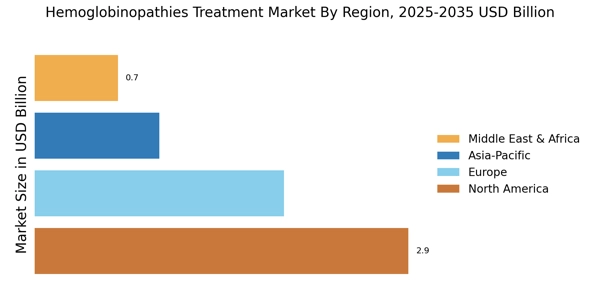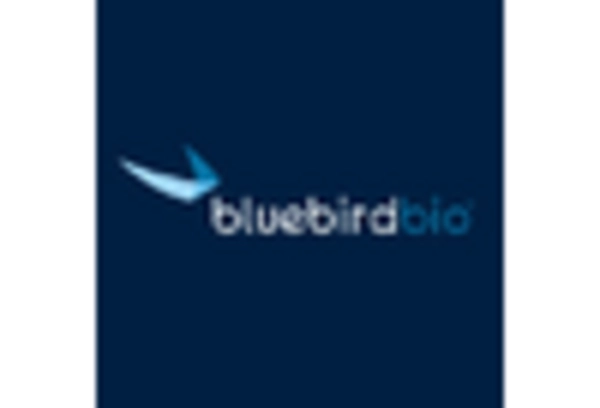Growing Awareness and Education
The growing awareness and education surrounding hemoglobinopathies are pivotal in shaping the Hemoglobinopathies Treatment Market. Increased public and professional knowledge about these disorders has led to improved diagnosis and management strategies. Educational campaigns aimed at healthcare providers and the general public are fostering a better understanding of the symptoms and implications of hemoglobinopathies. This heightened awareness is likely to result in earlier diagnosis and treatment initiation, which can significantly improve patient outcomes. Additionally, as more individuals become informed about available treatment options, demand for therapies is expected to rise, further propelling the Hemoglobinopathies Treatment Market.
Collaboration Between Stakeholders
Collaboration between various stakeholders, including healthcare providers, researchers, and pharmaceutical companies, is emerging as a key driver of the Hemoglobinopathies Treatment Market. Such partnerships facilitate the sharing of knowledge, resources, and expertise, which can accelerate the development of new therapies and improve treatment protocols. Collaborative efforts often lead to clinical trials that explore innovative treatment options, thereby enhancing the overall understanding of hemoglobinopathies. Furthermore, these collaborations can result in the establishment of comprehensive care models that address the multifaceted needs of patients. As stakeholders continue to work together, the Hemoglobinopathies Treatment Market is likely to experience significant advancements and growth.
Government Initiatives and Support
Government initiatives aimed at improving healthcare access and treatment options for hemoglobinopathies are crucial drivers of the Hemoglobinopathies Treatment Market. Various countries have implemented national programs to address the challenges posed by these disorders, including screening programs and treatment subsidies. For example, initiatives to promote early diagnosis and management of sickle cell disease have been established in several regions, leading to increased awareness and better healthcare outcomes. Such government support not only facilitates access to existing treatments but also encourages research and development in the field. As a result, the Hemoglobinopathies Treatment Market is likely to benefit from enhanced policy frameworks and funding opportunities that prioritize the needs of affected individuals.
Innovations in Treatment Modalities
Innovative treatment modalities, including gene therapy and novel pharmacological agents, are transforming the Hemoglobinopathies Treatment Market. Recent advancements have led to the development of therapies that target the underlying genetic causes of hemoglobinopathies, offering the potential for curative outcomes. For instance, gene editing technologies such as CRISPR are being explored to correct genetic mutations associated with these disorders. The introduction of new therapies is expected to enhance patient outcomes and improve quality of life, thereby driving market growth. Furthermore, the increasing investment in research and development by pharmaceutical companies indicates a robust pipeline of innovative treatments, which could significantly alter the landscape of the Hemoglobinopathies Treatment Market in the coming years.
Rising Prevalence of Hemoglobinopathies
The increasing incidence of hemoglobinopathies, such as sickle cell disease and thalassemia, is a primary driver of the Hemoglobinopathies Treatment Market. It is estimated that millions of individuals are affected by these disorders worldwide, with sickle cell disease alone impacting approximately 300,000 births annually. This rising prevalence necessitates the development and availability of effective treatment options, thereby propelling market growth. As awareness of these conditions grows, healthcare systems are increasingly prioritizing the management of hemoglobinopathies, leading to enhanced funding and research initiatives. Consequently, the Hemoglobinopathies Treatment Market is likely to expand as new therapies and interventions are introduced to address the needs of affected populations.


















Leave a Comment